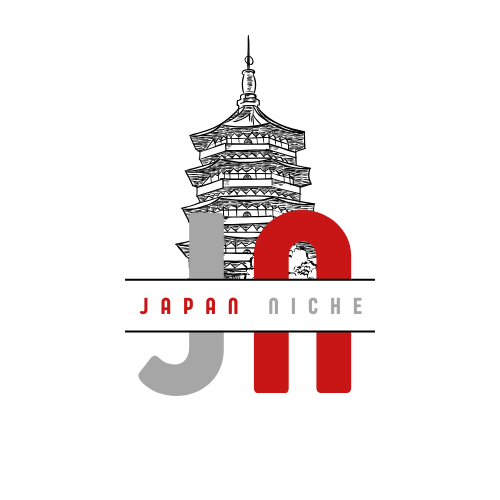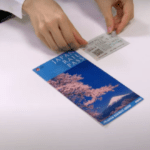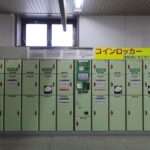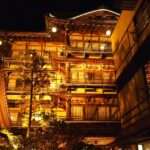I still remember the excitement and nerves I felt when planning my first trip to Japan. There was just so much to consider -there was just so much to consider! Where should I go? How long should I stay? What should I pack? And oh my, the language barrier…it all felt incredibly overwhelming.
Thankfully, I had an experienced friend who walked me through the process step-by-step. Looking back, I’m so grateful for their guidance. Japan ended up being one of the most incredible travel experiences of my life. The country’s perfect blend of modern and traditional, the warm hospitality of the people, and the sheer beauty at every turn – it was like nothing I’d ever encountered.
That’s why I’m thrilled to share my own hard-earned tips and tricks with you. Whether you’ve been dreaming of strolling through the cherry blossom-lined streets of Kyoto or drooling over the thought of an authentic kaiseki dinner in Tokyo, this guide will make sure your first trip to the Land of the Rising Sun is nothing short of unforgettable.
Japan is an incredible destination, but it can also feel a bit overwhelming, especially for first-time visitors. From the bright lights of Tokyo to the serene shrines of Kyoto, there’s so much to see and do. And let’s not forget the unique culture, delectable cuisine, and stunning natural landscapes. No wonder it’s on so many travelers’ bucket lists!
In this ultimate guide, I’ll cover everything you need to know to plan your perfect Japan itinerary – where to go, how long to stay, when to visit, budgeting, booking transportation and accommodations, and navigating the local customs. Whether you’ve got two weeks or just a few days, I’ll make sure you make the most of your time in the Land of the Rising Sun.
Choosing Your Japan Destinations
The first step in planning any trip to Japan is deciding where you want to go. With so many amazing cities, regions, and sights, it can feel impossible to narrow it down. But don’t worry, I’ve got some tips to help you figure out the best places to visit on your first trip.
Tokyo
As Japan’s capital and largest city, Tokyo is a must-visit for first-timers. From the neon-lit streets of Shibuya to the serene Imperial Palace gardens, there’s an incredible mix of modern and traditional experiences. Here are some iconic spots to consider:
- Shibuya Crossing: The world’s busiest pedestrian crossing, offering a quintessential Tokyo experience.
- Asakusa and Senso-ji Temple: Tokyo’s oldest temple with a vibrant shopping street leading up to it.
- Akihabara: A paradise for tech lovers and anime fans, filled with electronics stores and themed cafes.
- Meiji Shrine: A peaceful Shinto shrine located in a lush forest within the city.
- Tokyo Tower & Skytree: Both offer incredible views of the sprawling cityscape, especially stunning at night.
Plan to spend at least 3-4 days here to hit the highlights.
Kyoto
Often called the cultural heart of Japan, Kyoto is renowned for its stunning temples, shrines, and gardens. This ancient capital city is the perfect place to immerse yourself in traditional Japanese architecture and heritage. Key sights include:
- Fushimi Inari Shrine: Famous for its thousands of vibrant red torii gates winding up a mountain path.
- Kinkaku-ji (Golden Pavilion): A beautiful Zen temple covered in gold leaf, surrounded by scenic gardens.
- Arashiyama Bamboo Grove: A mystical bamboo forest that’s perfect for a serene walk.
- Gion District: Known for its historical tea houses and chance to spot a geisha.
- Kiyomizu-dera Temple: A stunning wooden temple on a hillside offering panoramic views of Kyoto.
I’d recommend 2-3 days minimum to see the top sights.
Osaka
Known as Japan’s food capital, Osaka is a lively, vibrant city that’s perfect for foodies. Don’t miss the iconic Dotonbori canal area, filled with street food stalls and restaurants. Here are some popular spots to visit:
- Dotonbori: Known for its neon lights and the iconic Glico Running Man sign.
- Osaka Castle: A historically significant castle surrounded by a beautiful park.
- Umeda Sky Building: An architectural marvel with a rooftop observatory.
- Kuromon Ichiba Market: Osaka’s famous food market offering fresh seafood and street food.
- Shinsekai: An old-school entertainment district known for its retro vibe and kushikatsu (fried skewers).
Osaka also makes a great base for day trips to nearby Nara and Kobe.
Hiroshima
While Hiroshima is certainly known for its tragic history, it’s also a modern, cosmopolitan city with much more to offer. The Peace Memorial Park and Museum are must-visits, and the city serves as a gateway to stunning Miyajima Island, where you can see:
- Hiroshima Peace Memorial Park & Museum: A tribute to the history and hope for peace.
- Miyajima Island (Itsukushima Shrine): Known for the floating red torii gate and deer roaming freely.
- Shukkeien Garden: A traditional Japanese garden that’s ideal for a quiet stroll.
- Hondori Street: A bustling shopping street with restaurants and shops.
- Okonomimura: A must-visit if you want to try Hiroshima-style okonomiyaki (savory pancakes).
Hokkaido
For nature lovers, the northernmost island of Hokkaido is a true paradise. Explore pristine national parks, hot spring towns, and even go hiking on active volcanoes. Sapporo, the capital, is also a vibrant city worth visiting. Highlights include:
- Sapporo Snow Festival (if visiting in winter): Known for its impressive snow and ice sculptures.
- Noboribetsu Onsen: One of Japan’s most famous hot spring resorts.
- Furano and Biei: Famous for flower fields in the summer and ski resorts in the winter.
- Shiretoko National Park: A UNESCO World Heritage Site with stunning natural scenery.
- Otaru Canal: A scenic canal town known for its historic buildings and glassware.
Depending on your interests and travel style, you might also want to consider places like Kanazawa for art and culture, or the Kiso Valley to walk the Nakasendo Trail.
When to Visit Japan
Deciding when to visit Japan is almost as important as choosing your destinations. The country experiences four distinct seasons, each with its own unique charm and challenges.
Spring (March-May): Spring is one of the most popular times to visit, thanks to the stunning cherry blossom season. However, this also means higher prices and increased crowds, especially around popular spots like Tokyo and Kyoto. If you can, try to visit in late March or early April to catch the peak bloom. Note: The Japan Meteorological Corporation usually releases a cherry blossom forecast in late winter, so checking their website before planning is a great way to catch peak bloom.
Summer (June-August): Summer brings hot, humid weather, but it’s also festival season in Japan. You can experience vibrant summer matsuri (festivals) with music, dancing, and incredible fireworks displays. It’s a fun, lively time to visit, but you’ll need to be prepared for the heat.
Fall (September-November): Autumn in Japan is breathtaking, with the entire country erupting in a blaze of red, orange, and gold foliage. The weather is typically mild and pleasant, making it a great time for outdoor activities and sightseeing. Just be aware that fall is another peak tourist season.
Winter (December-February): While winters in Japan can be chilly, it’s also an incredible time to visit. You can experience the country’s famous snow festivals, explore cozy izakaya pubs, and even go skiing or snowboarding. Prices and crowds are lower during this off-peak season.
No matter when you decide to go, I always recommend booking your flights and accommodations as early as possible. Prices tend to spike during holidays, festivals, and school breaks. If you have flexibility, try to avoid traveling during major Japanese holidays like Golden Week (late April/early May) and Obon (mid-August).
Budgeting and Booking Flights
Budgeting for a trip to Japan can be tricky, as costs can vary widely depending on your travel style, destinations, and time of year. But don’t worry, I’ve got some tips to help you plan an amazing trip without breaking the bank.
Airfare: Flights to Japan can be one of the biggest expenses, but there are ways to save. I always recommend booking your flights as early as possible, typically 6-12 months in advance for the best deals. Consider flying into Tokyo (Narita or Haneda) or Osaka (Kansai) – these are the main international gateways. You can also look for open-jaw tickets that allow you to fly into one city and out of another.Consider using flight comparison tools like Skyscanner or Google Flights to monitor prices.
Accommodations: Japan has a huge range of lodging options, from luxury hotels to traditional ryokans to affordable hostels. As a general guideline, you can expect to pay anywhere from $50 to $300+ per night, depending on your location and chosen accommodation. I’ve found that booking directly with ryokans or using Japanese booking sites like Rakuten can sometimes score better deals than global platforms.
Transportation: Getting around Japan is relatively easy, with an extensive network of trains, subways, and buses. I highly recommend purchasing a Japan Rail Pass if you plan on taking several long-distance train journeys. For local transportation, buying subway/bus passes or using a prepaid IC card like Suica or Pasmo can save you money.
Food and Activities: Japanese cuisine is world-renowned, but eating out every meal can add up quickly. I suggest budgeting $30-50 per person per day for food, and be sure to try a mix of restaurants, street food, and grocery store picnics. As for activities, many top sights and temples have modest entry fees, usually under $10. But remember to factor in costs for any specialized experiences, like tea ceremonies or cooking classes.
To get a better sense of your overall trip budget, I recommend using a tool like the Japan Travel Cost Calculator. This can help you estimate expenses based on your specific travel plans and preferences. And don’t forget to pad your budget with an extra 10-15% for incidentals and emergencies!
Booking Transportation and Accommodations
Once you’ve nailed down your destinations and travel dates, it’s time to start booking the nitty-gritty details of your trip – transportation and accommodations. This is where I’ve learned the hard way that planning ahead is absolutely key.
Let’s start with getting around Japan. The country has an incredible public transportation system, but navigating it can be tricky if you’ve never been. I always recommend investing in a Japan Rail Pass if you plan on taking multiple long-distance train journeys. These passes offer unlimited rides on the JR network and can provide huge savings, especially if you’re visiting multiple cities.
For shorter hops and local transit, you’ll want to look into purchasing prepaid IC cards like Suica or Pasmo. These work on subways, buses, and even some taxis, and you can easily reload them as needed. Just be sure to pick up your IC card as soon as you arrive – you’ll use it constantly!
When it comes to accommodations, Japan has a huge range of options, from high-end hotels to traditional ryokans to budget hostels. As I mentioned earlier, I find that booking directly with ryokans or using Japanese booking sites like Rakuten can sometimes score better deals than global platforms. But those global sites are still great for reading reviews and comparing options.
One pro tip I’ve learned over the years: be very mindful of your hotel’s location. Japan’s cities can be vast, and you don’t want to end up stuck in a inconvenient spot, far from the attractions you want to see. Look for accommodations near major transit hubs or in the heart of the action.
And of course, remember that peak seasons like cherry blossom time and the autumn foliage bring higher prices and limited availability. I always recommend booking your flights and hotels at least 6 months in advance for those popular periods.
Preparing for Your Trip
Okay, you’ve booked your flights, reserved your hotels, and mapped out an initial itinerary. Now it’s time to start getting ready for your big adventure! Here are some essential tasks to tackle before you depart.
First up, make sure you have all the necessary travel documents in order. That means a valid passport, of course, but also researching if you need a visa. Most nationalities can visit Japan for up to 90 days without a visa, but it’s always good to double-check.
Next, start thinking about what you’ll need to pack. Japan’s climate can vary dramatically by region and season, so check the forecast and pack accordingly. And don’t forget about cultural considerations – you’ll want to have some modest, comfortable clothing for temple visits.
Speaking of culture, it’s also a good idea to do a bit of research on Japanese customs and etiquette before you go. Things like removing your shoes indoors, using chopsticks properly, and understanding onsen bathing rules will make your trip smoother. I always recommend downloading a basic Japanese language app too, even if it’s just to learn a few polite phrases.
Finally, make sure you have all your finances in order. Notify your bank and credit card companies that you’ll be traveling, and consider getting a travel-friendly debit/credit card that doesn’t charge foreign transaction fees. It’s also smart to have a backup payment method, just in case.
Navigating Japan as a First-Timer
Congratulations, your Japan trip is just around the corner! Now comes the fun part – actually exploring this incredible country. But don’t worry, with a little preparation, you’ll be navigating like a pro in no time.
First and foremost, get familiar with Japan’s extensive public transportation system. Learn how to read train schedules, buy tickets, and use those handy IC cards I mentioned earlier. Google Maps is a lifesaver for planning routes, but I also recommend downloading an offline map app like Maps.me or Maps with Me Pro.
When it comes to getting around, be aware that taxis can be quite pricey in Japan, especially in the major cities. Instead, stick to trains, subways, and buses whenever possible. And don’t be afraid to ask station attendants for help – they’re usually very kind and patient with tourists.
Of course, mastering the language is another big hurdle for first-time visitors. Even if you only know a few basic Japanese phrases, the locals will really appreciate the effort. Download a translation app, carry a pocket phrasebook, and don’t hesitate to use hand gestures and point to menus. With a smile and a bit of patience, you’ll be communicating like a champ in no time.
One final tip: be prepared to experience a bit of culture shock during your trip. Japan is a remarkably unique country, and some things may feel quite different from what you’re used to. But embrace the differences! That’s all part of the adventure. Stay curious, be respectful, and you’ll have an unforgettable experience.
Planning a trip to Japan can feel daunting at first, but I promise it’s worth the effort. By taking the time to carefully research destinations, book accommodations and transportation, and familiarize yourself with local customs, you’ll set yourself up for an unforgettable adventure.
Remember, no trip to Japan is ever truly “perfect” – there will always be unexpected challenges and surprises along the way. But that’s all part of the thrill! Embrace the journey, go with the flow, and get ready to create lifelong memories in this truly unique and captivating country.
With this comprehensive guide in hand, you’re well on your way to planning an amazing first trip to Japan. So what are you waiting for? Start exploring those flights, booking those ryokans, and get ready for the experience of a lifetime. Bon voyage!








